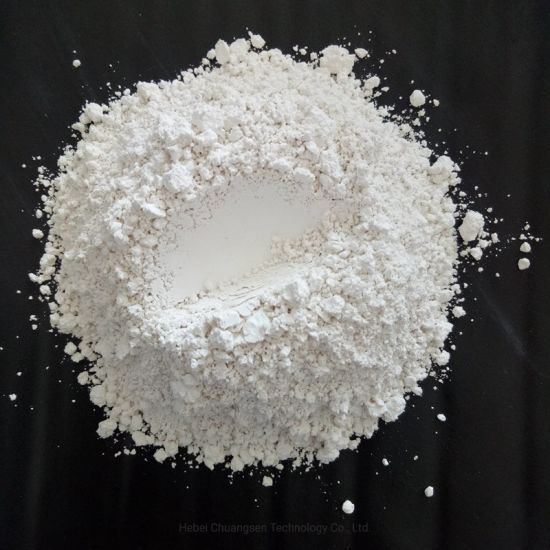Material Application of Tourmaline Mineral
 Tourmaline mineral material is a material with special functions that is processed and prepared from natural tourmaline mineral as the main raw material. Tourmaline mineral materials mainly include ultrafine tourmaline powder and modified ultrafine tourmaline powder, as well as tourmaline ceramics, tourmaline fibers, tourmaline coatings, and tourmaline composites prepared from ultrafine tourmaline powder or modified ultrafine tourmaline powder. materials etc.
Tourmaline mineral material is a material with special functions that is processed and prepared from natural tourmaline mineral as the main raw material. Tourmaline mineral materials mainly include ultrafine tourmaline powder and modified ultrafine tourmaline powder, as well as tourmaline ceramics, tourmaline fibers, tourmaline coatings, and tourmaline composites prepared from ultrafine tourmaline powder or modified ultrafine tourmaline powder. materials etc.
Tourmaline gems are mainly dominated by attributes such as aesthetics, durability, rarity, and non-toxicity, while tourmaline mineral materials mainly emphasize their functional attributes, such as spontaneous polarization, pyroelectricity, infrared radiation, and adsorption properties. Tourmaline mineral material is a functional material obtained by reprocessing tourmaline mineral according to human will in order to realize some functional application properties of tourmaline.
1. Water treatment materials
The spontaneous polarization of tourmaline makes it have an electrostatic field around it, and has strong adsorption, which can effectively adsorb metal ions and acid radical ions in the solution, and crystallize from the surface of tourmaline, thereby purifying water. Therefore, tourmaline is a good environmental material for water pollution control, and as an excellent raw material for preparing adsorbents, it has a very good application prospect.
Because it is difficult for metal ions to enter the crystal structure of tourmaline, the adsorption of tourmaline to ions is mainly surface adsorption. There is an electrostatic field around tourmaline particles, and its surface adsorption is mainly complex adsorption and electrostatic adsorption, and can simultaneously adsorb anions and cations, and the adsorption amount is not limited by the ion exchange amount. In the solution, positive and negative ions are gathered at the two poles of the tourmaline crystal, and the ions are precipitated after reaching the saturated adsorption concentration.
2. Health care textiles
The number of negative oxygen ions in the air is one of the important criteria for evaluating air quality, because negative oxygen ions can reduce the content of dust and harmful gases in the air. Water in the air can be electrolyzed by tourmaline, thereby increasing the number of negative oxygen ions in the air. In addition, tourmaline can produce infrared radiation absorbed by the human body, produce thermal effects, increase the temperature of local tissues of the human body, expand blood vessels, accelerate blood flow, improve local blood circulation, and play a role in health care and physical therapy. Therefore, tourmaline can be used in textile manufacturing to make clothing and accessories with health care functions.
In the 1990s, Japan began to use tourmaline as the main raw material to produce negative ion textiles, and used post-finishing technology to carry out negative ion modification treatment on natural fibers (such as cotton and wool). The treatment solution containing ultra-fine tourmaline powder is fixed and attached to the surface of the fabric by padding and drying processes, so that the fabric has anion function. The felt is modified with negative ions by using the treatment solution prepared by 5-15 μm tourmaline powder, anionic dispersant, binder and water, and the treated felt has a good negative ion generating effect.
3. Coating additives
Tourmaline mineral materials can be used as additives in negative ion coatings. Coatings added with ultrafine tourmaline powder can meet the requirements of general coatings on color perception, texture and scrub resistance, and can also release a certain concentration of negative ions to achieve a certain sterilization effect. Some negative ion coatings produced in Japan and South Korea have been sold domestically, and their prices are much higher than ordinary coatings.
4. Photocatalytic materials
TiO2 is a highly active photocatalytic material with good thermal stability and strong photooxidation resistance. However, the recombination rate of photoelectrons and holes produced by TiO2 is high, and the photocatalytic efficiency is low, which affects the industrial application of TiO2. Tourmaline has the properties of spontaneous polarization and infrared radiation, and the composite material of tourmaline and TiO2 can not only improve the photocatalytic activity of TiO2, but also have the advantages of both materials.
5. Fuel activation
Tourmaline has a high infrared radiation emissivity in the 3-6.2μm band, which is conducive to the absorption of radiation by the human body and produces thermal effects, so tourmaline mineral materials have health care and physiotherapy functions. At the same time, the excellent infrared radiation performance of tourmaline mineral materials can also be used to improve fuel combustion efficiency.
Fuel oil is a liquid mixture composed of a series of alkanes, olefins, naphthenes, aromatic hydrocarbons, polycyclic aromatic hydrocarbons and additives. The study found that the C-C bond resonance in fuel oil can absorb radiation with a wavelength of 3.2-3.6 μm, and the C=C and C≡C bonds absorb radiation with a wavelength of 4.4-4.7 μm and 5.8-6.2 μm, respectively. When the fuel molecule is activated by the infrared radiation material, it absorbs the radiation released by the infrared radiation material and stores the energy inside the fuel molecule. When the fuel enters the combustion chamber, the stored energy will be released in the form of explosive kinetic energy, thereby increasing the internal energy of the fuel molecules, so only a small amount of heat energy can be provided during combustion to break the carbon-carbon covalent bonds in the fuel molecules, thereby improving combustion efficiency and improved power performance.
Tourmaline mineral materials have a high infrared radiation rate in the 3-6.2μm band, so using tourmaline mineral materials to activate fuel oil can improve the energy-saving and emission-reduction effects of fuel vehicles.
